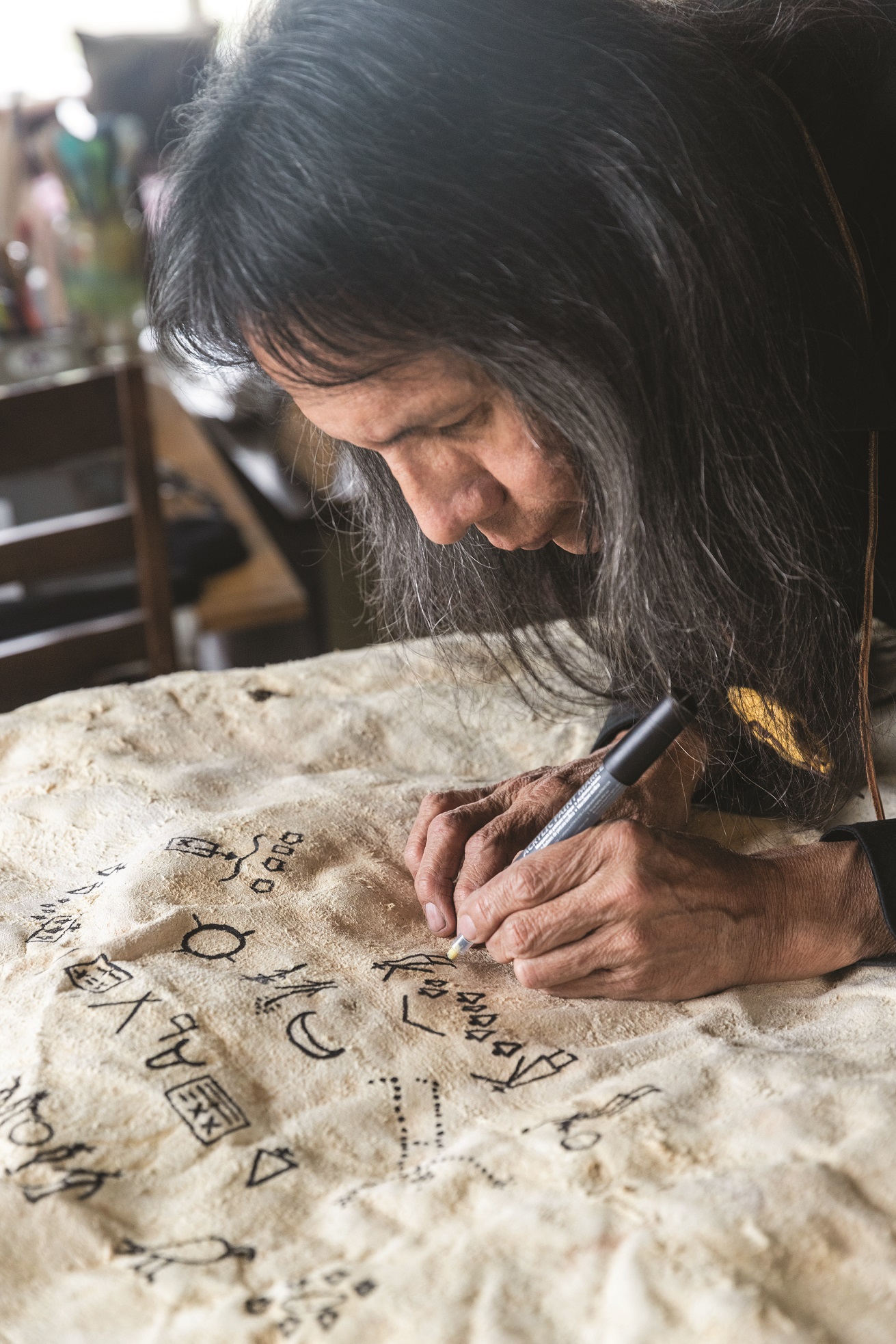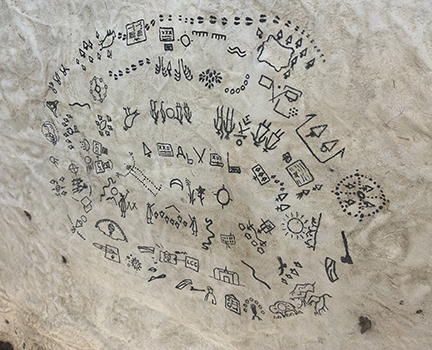
By Odette Auger
A Buffalo Spirit Report, Windspeaker.com
For Kainai artist Api’soomaahka (Running Coyote), William Singer III, a winter count robe has multiple purposes.
It transfers teachings from the Kainai people. Tells of the elements and the lands. And it records the history of the community.
Api’soomaahka is the creator of a winter count robe commissioned by the College of Lethbridge. The painted buffalo hide serves as an open document of the college in southern Alberta using a form of pictograph art.
Communicating Blackfoot worldview, the winter count robe was unveiled Sept. 26 as part of truth and reconciliation events at the college. The idea for the winter count robe started in 2017, when the college commissioned some artwork from Api’soomaahka that similarly incorporated pictographs.
“It was something to show the community and the school things that we've been doing for ages—winter counts, like sweat lodges, or Sun Dance,” said Api’soomaahka.
“We never ‘were’ or ‘was’. We are still here,” said the survivor of residential schools.
“When the buffalo came into being, that's when we started to use the hide to tell all of our stories, the history of the people, science, culture, everything.”

The robes also function as a teaching tool, since many of the symbols are also a component of Indigenous sign language, Api’soomaahka explained, giving the example of “grass, moon and stars.”
His interest in winter counts began in childhood, Api’soomaahka said. He remembers being eight or nine years old and seeing winter counts “in the books at the library. From then, that was something I was interested in learning more about, because that’s our history, and the history of our language as well.”
By the time he was 18, he was researching winter counts, “getting to know a lot of the winter counts that have been made by different community members.”
Api’soomaahka said he has started to see more winter counts in the past 10 to 15 years. His research of winter counts continued and began to influence his art making.
Api’soomaahka “started doing a lot more of my artwork in the old style of winter count and pictograph art.”. Many of the symbols are very old, and some of them are newer creations.
His art incorporates some of the new style of symbols, but he’s also “faithful to a lot of the original design work,” Api’soomaahka said.
“I like to keep my work looking old, looking like it's been done 200-300 years (ago).”
A lot of winter counts start with the first mark being the sun, said Api’soomaahka.
“The sun also represents creation, the Creator, and we cannot be anything without the sun. And that's the beginning.”
Protected in a mobile display case, the robe is featured in the Technology department at Lethbridge College, with the ability to move it around for events, such as graduation ceremonies.
Api’soomaahka said that’s a fitting location for “our science, our technology.”
Api’soomaahka will be involved in the work to add more symbols to the winter count robe, which is normally done at the winter solstice, so he expects the next marks to be added next winter.
Windspeaker is owned and operated by the Aboriginal Multi-Media Society of Alberta, an independent, not-for-profit communications organization.
Each year, Windspeaker.com publishes hundreds of free articles focused on Indigenous peoples, their issues and concerns, and the work they are undertaking to build a better future.
If you support objective, mature and balanced coverage of news relevant to Indigenous peoples, please consider supporting our work. Whatever the amount, it helps keep us going.
